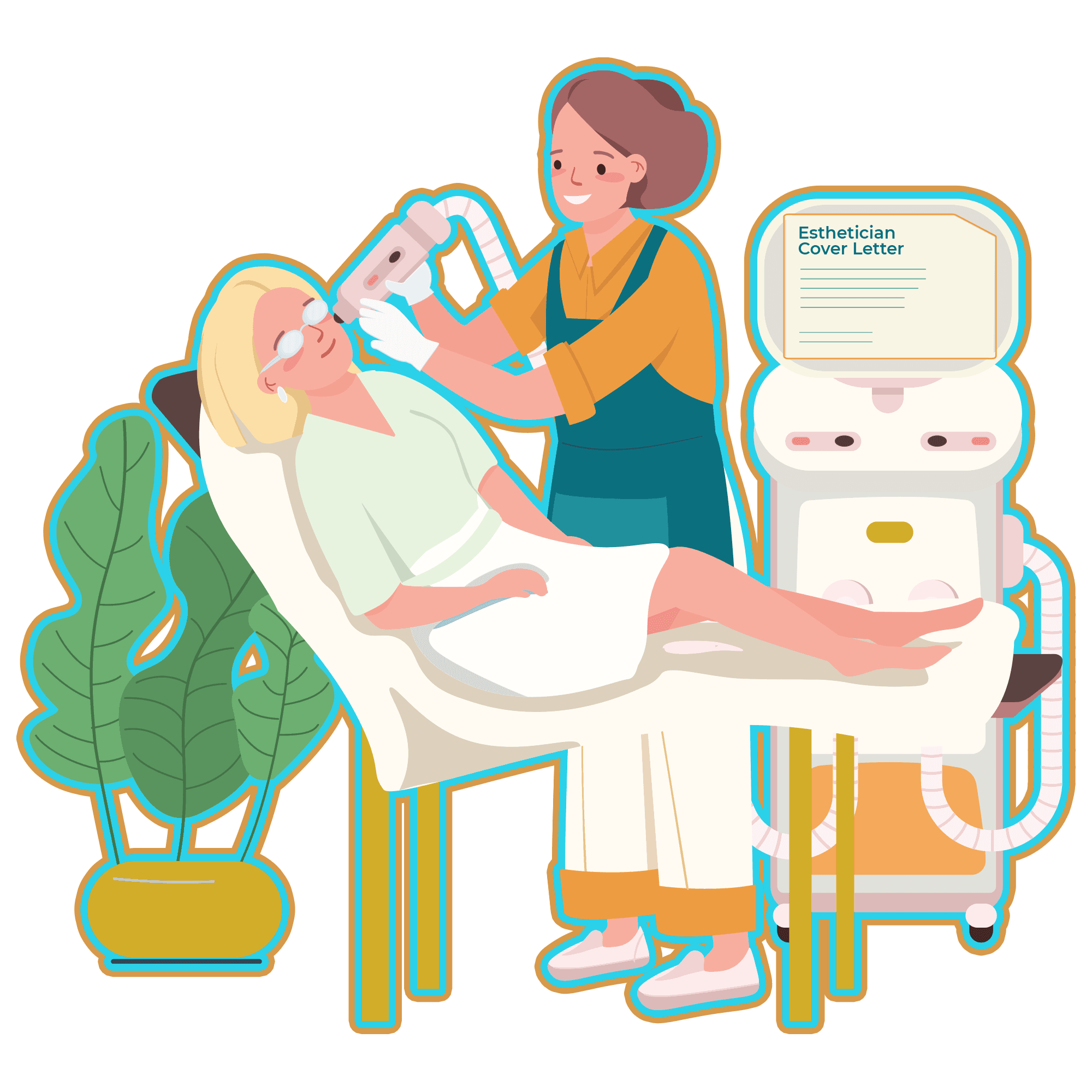Table of Contents
- Should You Put References On A Resume
- How To Write References On A Resume
- How To Format References On A Resume
- Where To Put References On Resume
- How Many References Should You Have On A Resume
- How To Ask Someone For A Reference
- How To Send References Via Email
- What If You Have No References For Your Resume?
- Conclusion
References are generally not recommended on resumes in today’s job market. Job seekers often prioritize showcasing their skills, experience, and accomplishments instead of references. References on a resume are only used if the job description or hiring manager requires it. The meaning of references in a resume refers to those who vouch for a person’s qualifications, skills, and character to potential employers.
To put references on a resume, create a separate page titled “References.” Listing references on a resume requires their permission. Add the resume references’ names, job titles, companies, contact information, and professional relationships to this reference page. To format references on a resume, add an exclusive reference page with the same format as the resume. The reference layout resume plays a significant role in presenting the information clearly and effectively to employers. Include name, address, phone number, and e-mail, depending on the document type. Put the employer’s information after the personal data.
Make a separate page on the resume dedicated to references and place it at the end. The references section on a resume is easily accessible while remaining separate from the main content of the resume. Three to five strategically chosen references are sufficient if the job description or the company requests them in most cases.
To ask someone for a reference, taking the conversation professionally and courteously is essential. Referencing someone requires their permission. It is important to reach out to them via email or phone. Send them an updated resume and provide specific details about the application when the reference agrees. Thank them for their support promptly. To send references via email, start by attaching a separate document with the list of references and their contact information. Indicate that the attached document contains the references list resume they require to evaluate the application further. There are still people who have valuable professional references, even with limited work experience. A person without a formal employment background is able to utilize personal volunteer work, internships, or academic experience.
Should You Put References On A Resume
No, references are not put on a resume. References are generally not recommended on resumes in today’s job market. References take up valuable space better utilized for showcasing skills, qualifications, and achievements. Sharing personal contact information with references without their consent raises privacy concerns. Some job descriptions specifically request references. Following the employer’s instructions and providing references is crucial in such cases.
How important are references on a resume? Employers appreciate candidates who pay attention to detail and demonstrate their ability to follow instructions. Asking for references in a job description indicates that the employer values obtaining insights from others who vouch for a person’s qualifications and character. Adding references to a resume demonstrates professionalism and willingness to comply with instructions.
Consulting firms are able to request testimonials from past employers as part of their hiring process. What kind of references should be used on a resume? Include the contact information of those who provided positive feedback. Human resources verify the testimonials’ authenticity and credibility by writing a reference for an employee.
How To Write References On A Resume
To put references on a resume, create a separate page titled “References.” List the references’ names, job titles, companies, contact information, and professional relationships. Ensure that the references chosen speak positively about qualifications and character. An effective reference outline for a resume includes the following steps.
- Use a separate page for the references list.
- Place the name and the title “References” at the top of the page when writing a list of references for a resume.
- Maintain consistent formatting for all resume references, including their full names, professional titles, companies, and contact information.
- Ensure that at least three references are included.
- Before submitting a job application with their contact details, inform all the references about the possibility of being contacted.
- Avoid oversharing by including only the necessary information mentioned in the list. Personal mailing addresses of references are not retained as it is uncertain that they will be contacted via traditional mail, and privacy concerns arise.
- Select references carefully, tailoring them to match the job requirements being applied for. For example, to highlight marketing skills, choose a former boss, the Head of Marketing or Chief Marketing Officer, who provides relevant insights and attests to abilities in that field.
How should references look on a resume? The wrong resume references example is below.
Providing only one reference does not offer a well-rounded perspective on skills and qualifications. Should you put references upon request on a resume? Eliminate the commonly used phrase "References available upon request" from a resume. "References available upon request" is a standard error employers are aware of, and it has become an overused statement. Use a dedicated resume references page as the final page of the application for creating a reference section on the resume. The following resume reference example is correct. |
Are resume references in alphabetical order? List the references chronologically, starting with the most recent person worked with. Below is a sample resume reference template.
[Your name]
[Your address]
[Your phone number]
[Your email address]
References
[Reference name]
[Reference position]
[Reference company]
[Reference company address]
[Reference phone number]
[Reference email address]
How To Put Academic References On Resume
To put academic references on a resume, start by including the names of the academic references. Mention reference’s professional titles or positions to highlight their expertise. Provide the name of the academic institution where the references are employed to give context. Provide potential employers with their contact information, such as email addresses and phone numbers, to facilitate further verification.
Academic references are required to be asked for permission before listing their information on a resume. Ensure the references speak positively about academic abilities and achievements while being relevant to the job or educational program being applied for. The following are academic reference samples for resumes.
John Thompson
456 Elm Avenue, Springfield, IL 67890
555-123-4567
References
Sarah Adams
Associate Professor of Psychology
University of California
973 Oak Street, Los Angeles, CA, 90001
(310) 825-1234
Robert Johnson
Dean of the Business School
Stanford University
301 Maple Avenue, Stanford, CA, 94305
650-723-2300
How To Format References On A Resume
To format references on a resume, add an exclusive reference page with the same format as the resume. Formatting references on a resume is crucial for presenting a polished and professional document to potential employers. The correct resume reference format are able to be created in four steps.
- Maintain consistent formatting: Use the same font, margins, and color scheme as the resume and cover letter to create a correct format for references on a resume.
- Include personal information: At the top of the reference sheet, include the name, address, phone number, and mail aligned according to the overall layout of the cover letter and resume. Choose the side (left, right, or center) that fits the look of the documents.
- Provide employer’s information: List the employer’s information in a specific order: name, job position, company name, company address, and contact information.
- Use titles/subtitles: Include a clear title or subtitle for the section, such as “References” or “Professional References.” What is a professional reference? Professional references confirm qualifications, skills, work ethic, and character.
Where To Put References On Resume
Creating a separate page on a resume dedicated to references and placing it at the end is recommended. Creating a separate page on a resume dedicated to references allows for easy access to references while keeping them distinct from the main content of the resume.
Having a separate reference page for a resume is advisable for two reasons. Firstly, having a separate reference page helps maintain a clean and focused layout for the resume, ensuring that the primary information about skills, experience, and qualifications remains the central focus. Cluttering the main body of the resume is avoided by providing a separate references page on a resume.
Secondly, including references in the resume using a separate page allows employers to access and review references when needed quickly. Employers easily find the contact information and professional details of references without searching the entire resume. Using a separate page references streamlined approach saves time and demonstrates preparedness. A Society for Human Resource Management (SHRM) survey found that 92% of employers conduct background checks, usually during pre-employment screening (87%). A Society for Human Resource Management (SHRM) declares that some even repeat checks annually (15%) or when employees are promoted (10%).
How Many References Should You Have On A Resume
Three to five strategically chosen references are sufficient in most cases if the job description or the company requests them. Three to five references strike a balance between providing enough credible recommendations and not overwhelming the hiring manager. Giving three to five references method demonstrates diverse perspectives, experiences, and qualifications. The number of references is increased to five to seven for those applying for senior roles.
Too few references raise questions about the breadth of professional connections. Too many references dilute the impact of each reference and make it difficult for the hiring manager to focus on the most relevant ones simultaneously. Providing three to five references is recommended when the interviewer doesn’t provide a specific number. Who should be a reference for a job? Prioritize listing individuals who provide highly positive and enthusiastic recommendations for the position towards the beginning of the list. Some references examples for a resume include former supervisors, colleagues, professors, or mentors who vouch for a person’s qualifications, skills, and character to potential employers.
How To Ask Someone For A Reference
To ask someone for a reference, it is essential to take the conversation professionally and courteously. Making a polite and well-informed request for references email increases the likelihood of receiving a positive and effective response. Below are step-by-step instructions showing how to ask for professional references.
- Obtain permission before listing someone as a reference.
- Reach out to them through a polite email or phone call, providing essential information about the request, including any time constraints.
- Share an updated resume and provide specific details about the position being applied for once the reference agrees. Sharing a resume and providing specific details about the position helps references get information about questions to ask for references on a resume.
- Follow up promptly, expressing gratitude for being referenced and their time invested in supporting the application.
References are able to be asked for by writing a letter once they have been chosen. The following is an example of how to ask someone to be a reference.
John Thompson
456 Elm Avenue, Springfield, IL 67890
555-123-4567
May 18, 2023.
Mr. David Johnson
Senior Vice President
Westel Corporation
789 Business Road
Cityville, TX 54321
Dear Mr. Johnson,
I hope you are well. I would appreciate your help in my job search. I am currently seeking new employment opportunities, and your insights and recommendation would significantly enhance my chances of securing a desirable position.
To provide a reference for my qualifications, skills, and abilities, I would like to use you as a reference. Whenever I provide your name and contact information to anyone, I will notify you so you will know when to expect a call from me. Please let me know if you would be comfortable providing me with a reference.
I would sincerely appreciate your guidance if you have any insights, advice, or recommendations for my job search. Additionally, if you come across any job openings or networking opportunities that align with my qualifications, I would be grateful if you could share them with me.
I have attached my updated resume, providing an overview of my professional background, skills, and achievements. If you require any additional documents or information, please do not hesitate to let me know. Please contact me if you have any questions or need further information. I eagerly await your response, and once again, thank you for your kind consideration. Thank you in advance for your assistance.
Warm regards,
John Thompson
Who Is A Professional Reference?
A professional reference vouches for qualifications, skills, work ethic, and character professionally. Professional references are individuals who have direct knowledge of work experience and provide insight into professional abilities.
What are examples of professional references? Professional references on a resume are typically former supervisors, managers, colleagues, or clients who have observed performance in a work-related capacity. Professional references provide valuable information to potential employers about suitability for a job or professional reputation. It is essential to choose people for the professional reference list template who have a positive impression of work and speak confidently about skills and qualifications.
Can A Personal Reference Be A Family Member
Family members are generally not recommended as personal references. Family members are able to be perceived as biased and unable to assess qualifications fairly.
What kind of references are needed on a resume? Personal references on a resume provide insight into character, qualities, and values. Personal references are usually not based on work experience or professional achievements. Personal references are able to be friends, mentors, community leaders, or individuals who have known someone in a personal capacity outside of work. People selected for including personal references templates have known the person for at least a year, speak highly of them, and are readily available.
How To Send References Via Email
To send references via email, start by attaching a separate document that includes the references list for the resume with their contact information. Begin the email by thanking the recipient for their time and consideration during the interview. Mention that the attached document contains the references required for further application evaluation. An example of sending a reference email is below.
Email Subject: List of References (John Davis – Marketing Manager)
Dear Ms. Johnson,
I hope this email finds you well. Thank you for our interview earlier this week for the Marketing Manager position at XYZ Company. Discussing the role and learning more about the company's marketing strategies was a pleasure.
Per our conversation, I have attached a list of three references who can provide valuable insights into my professional background and work ethic. I have obtained their consent to share their contact information with you.
Please feel free to contact Mr. Michael Thompson (Marketing Director) at (555) 123-4567 after October 25, as he is currently out of the office. The remaining references, Mr. Robert Anderson (Senior Marketing Specialist) and Ms. Emily Mitchell (Former Manager), can be contacted at your convenience.
If you require any additional information or documentation you need to process my application, please do not hesitate to let me know. I am available at (555) 987-6543 or via email at [email protected]. Thank you for considering my application, and I look forward to hearing from you soon.
Sincerely,
John Davis
What If You Have No References For Your Resume?
There are still people who are valuable professional references, even if someone only has limited work experience. Personal volunteer work or internships are utilized despite not having a formal employment background. The following are four reasons someone does not have references to include on their resume.
- Being a recent graduate: Significant work experience or established professional relationships to serve as references have not been able to as a recent graduate. What to include on a resume? Professors, academic advisors, or internship supervisors are leveraged like references who speak to academic achievements, skills, and potential.
- Self-employed: Traditional references from supervisors or managers are not obtained if someone is self-employed or has operated a business. References from clients, business partners, or industry peers who attest to the professionalism, expertise, and quality of work are sought.
- Not belonging to clubs or organizations: The opportunity to establish references from clubs or organizations is lacking if someone is not a member. References from professors, mentors, or individuals who collaborated on projects or initiatives outside of formal club settings are still utilized.
- Negative past experiences: References hesitate to offer if someone has had negative experiences with previous employers or colleagues. It’s essential to focus on building new positive relationships through volunteer work, internships, or freelance projects and seek references from individuals who speak to skills, work ethic, and character in a more favorable light if someone has had negative experiences with previous employers.
Conclusion
Considering references as part of a resume is important in the job application process, but it is essential to approach their inclusion thoughtfully. It is generally recommended to refrain from including references on a resume unless explicitly requested by the employer. Avoiding references on a resume allows someone to highlight their qualifications, skills, and experiences directly relevant to the job they’re applying for.
Who to use as references for a resume? It is important to ensure references positively and knowledgeably describe the candidate’s work ethic, skills, and character when choosing them. References are preferably professional contacts such as former supervisors, colleagues, or clients with direct experience working with the person. Personal connections who have witnessed professionalism in other contexts, such as volunteer work or internships, are able to be considered without formal work experience. References are always asked for permission before sharing their contact information and letting them know about the job opportunities being applied for.
Maintaining a separate reference list and tailoring a resume to highlight skills and experiences help someone present a well-organized and professional resume. Remember to follow any specific instructions the employer provides regarding references and always maintain open communication with references throughout the job search process.




